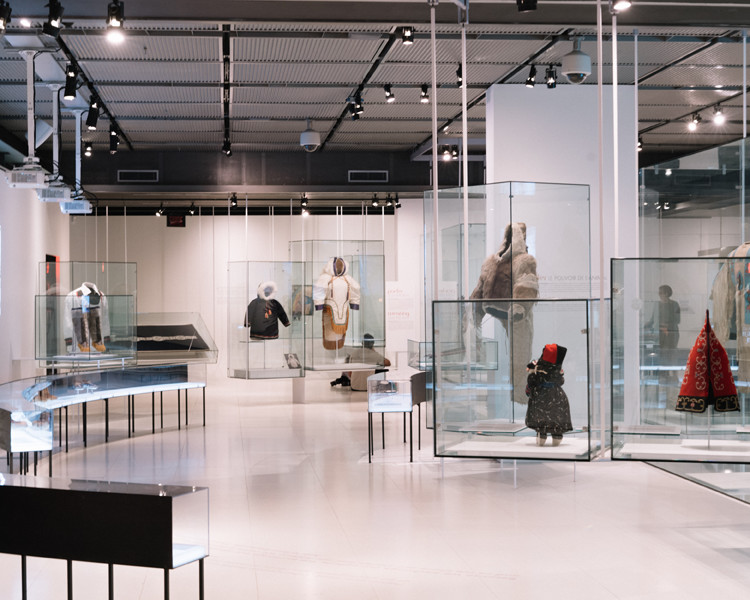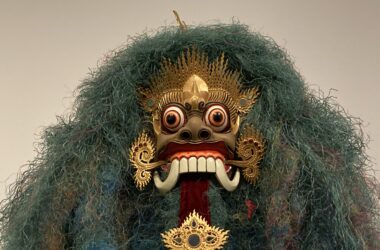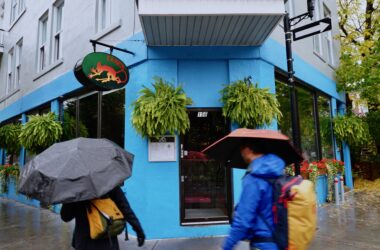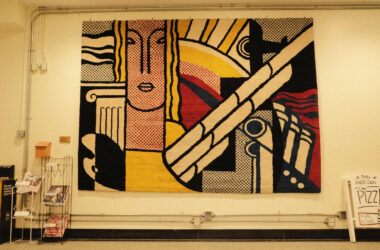The McCord Museum’s newest addition to their permanent collection, Wearing our Identity. The First Peoples Collection, explores the historical, cultural, and spiritual significance of indigenous clothing. The exhibition showcases garments and artifacts associated with clothing production, such as needles and bone scrapers, to demonstrate how clothing shapes identity and the role of fashion as a tool for self expression within indigenous and First Nations cultures across Canada. The exhibition also documents the effects of colonialism and the relationship between westerners and indigenous people, as captured by their clothing.
The exhibition is organized around loose themes; placards on the wall describe indigenous clothing in relation to concepts such as belief, history, and suffering. The show explains that, within indigenous cultures, clothing connects a person to the natural world, and garments fashioned from animal hide or using plant resources display the bridge between the human and the non-human spheres. Clothing often combined the aesthetic and spiritual with the practical, and ornamental items such as beaded moccasins and cradleboards are used in everyday life.
Wearing our Identity approaches colonialist discourse by describing the ways in which Western settlements and institutional oppression shaped indigenous cultures and clothing. One of the placards addresses residential schools, detailing how administrators stripped indigenous children of their garments and visible cultural signifiers. This discrimination is made all the more visceral when contextualized within evidence of the importance First Nations people place on their dress and expression.
Clothing represents both a mode of resistance and a means of acknowledging indigenous history. Documenting the evolution of particular items of clothing can illustrate cross-cultural exchange and also helps to assess a previously self-contained culture’s evolution as it is forced to integrate and adapt. Having distinctive clothing with cultural meaning that extends beyond aesthetics marks them as different not in a way that others them so much as celebrates their distinctiveness.
Wearing our Identity curates sacred artifacts for a museum format in a way that is respectful of their cultural significance. By contextualizing the work with background information, the exhibition encourages engaged viewing, rather than relying on the often brief relationship between the active viewer and the passive art object. The exhibition also features work by contemporary indigenous artists such as Terrance Houle and Maria Hupfield and is curated by the Aboriginal artist and curator Nadia Myre, indicating an involved indigenous presence in the creative process.
However, Wearing our Identity also prompts concerns surrounding consent and Western contextualization. Many of the works list names of donors or private owners; an overarching narrative of cross-cultural exchange appears missing. Simply listing a name at the bottom of a museum label ignores colonialist discourse, in which historically, westerners have often appropriated indigenous goods. Placing artifacts significant to indigenous religious and cultural practices without proper credit of the journey by which the artefacts traveled from their creators to the museum strips them of their historical and cultural worth, rendering them commodities that the wealth and often white viewer pays a fee to observe. While Wearing our Identity marks an important step in reconciling colonial Canadian and indigenous relationships, the limitations of the gallery context leaves room for active understanding and greater representation of First Nations media







